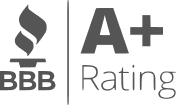When a church experiences a cash-flow crunch, the first instinct is often to apply for a traditional bank loan. Yet, in many cases, a church line of credit is a far more flexible and cost-effective solution. Many faith-based organizations stick to conventional church loans simply because “that’s how we’ve always done it” — or because they don’t fully understand how a revolving credit line can work for them. 
Let’s explore why a line of credit may be the right financial tool for your church, how it works, and why it makes sense for both short-term needs and long-term mission goals.
Summary
Why Churches Need a Line of Credit
Like any nonprofit organization, churches rely heavily on donations and tithes — revenue streams that fluctuate throughout the year. According to the Evangelical Council for Financial Accountability (ECFA), nearly 47% of U.S. churches report seasonal giving patterns that create at least one major cash-flow gap annually.
During those lean months, a church line of credit provides immediate access to working capital — without the red tape of a traditional loan. While banks typically require extensive documentation, such as yearly cash flow reports, budgets, and renovation plans, a line of credit offers pre-approved funds that can be drawn as needed and repaid flexibly.
How a Church Line of Credit Works
A church line of credit functions like a revolving account: once approved for a specific amount, your church can withdraw funds at any time and only pay interest or fees on the money actually used. When the funds are repaid, the full amount becomes available again — eliminating the need to reapply for a new loan.
This type of financial safety net is ideal for churches that experience temporary cash shortages due to delayed donations, event cancellations, or unexpected building repairs. For example, personnel costs account for about 49% of the average church budget, while facility expenses consume another 23%, according to Lifeway Research. That leaves little room for emergencies — making a revolving credit line invaluable.
Common Uses for a Church Line of Credit
A line of credit can be used for almost any operational need, including:
Payroll and administrative expenses
Facility maintenance or emergency repairs
Short-term ministry or outreach projects
Covering costs until pledges or grants arrive
Unlike traditional church financing, churches aren’t required to justify each withdrawal or provide project-specific documentation. That flexibility allows leaders to respond quickly to financial challenges or seize opportunities for growth.
For more budgeting insights, visit the National Council of Nonprofits.
Advantages of a Church Line of Credit
A church line of credit offers several unique benefits:
Lower interest rates or fees compared to credit cards or short-term loans
No collateral or personal guarantee required by select lenders
Improved cash flow management during seasonal downturns
Support for mid-sized purchases that don’t justify a full loan
Ongoing availability — borrow, repay, and reuse as needed
In short, a church line of credit helps ministries stay mission-focused even during your churches uncertain financial periods.
Financing Solutions: A Trusted Partner for Churches
At Financing Solutions, we’ve helped hundreds of churches and nonprofits access the capital they need to operate confidently. Our Line of Credit for Churches requires no personal guarantees or collateral, features a simple 2-minute online application, and provides same-day, no-obligation offers.
Key benefits include:
No setup or maintenance fees
Funds wired in minutes upon request
48–72 hour setup
Yearly renewal with 24/7 online access
Low usage fees and full repayment flexibility
A+ and 5-star rating from the Better Business Bureau
If your church is ready to strengthen its financial foundation, explore your options with a quick, no-obligation line of credit application today.
Final Thoughts
A church line of credit isn’t just a safety net — it’s a strategic tool that gives faith-based organizations the flexibility to manage expenses, handle emergencies, and keep ministries thriving even when donations fluctuate. By planning ahead and partnering with a trusted nonprofit lender, your church can focus on its mission — not its cash flow.




